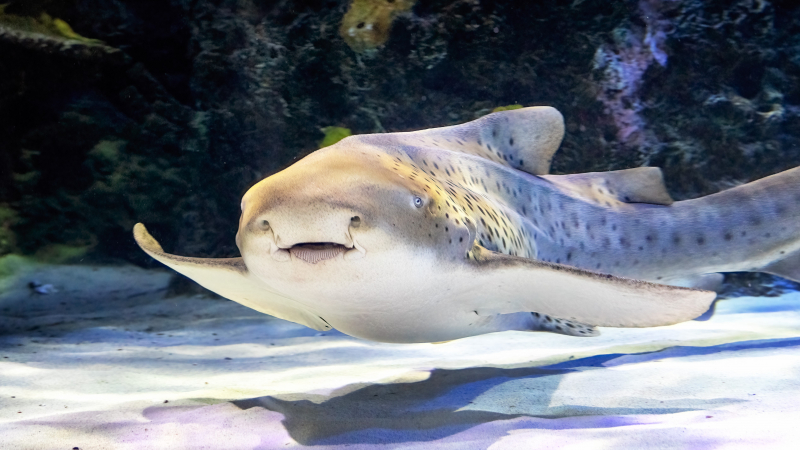Zebra Shark
The Zebra Shark, an intriguing marine species, stands out as one of the common animals beginning with the letter “Z.” Despite its name, the zebra shark is not a striped creature like its terrestrial namesake. Instead, it boasts a distinctive appearance characterized by a unique pattern of spots that resemble a leopard more than a zebra.
Scientifically known as Stegostoma fasciatum, the zebra shark is a member of the carpet shark family and is primarily found in the Indo-Pacific region. Unlike other sharks, the zebra shark has a slender body with a long tail and can reach lengths of up to 8 feet. The most captivating feature of this species is its striking pattern of dark spots against a light background, creating a visual spectacle that sets it apart from other sharks.
One notable characteristic of zebra sharks is their unique life cycle. These sharks are oviparous, meaning that instead of giving birth to live young, they lay eggs. The egg cases, often referred to as “mermaid’s purses,” provide a protective environment for the developing embryos. This distinctive reproductive strategy contributes to the zebra shark’s overall uniqueness within the shark family.
Zebra sharks are predominantly nocturnal hunters, meaning they are most active during the night. Their diet consists of various marine creatures, including small fish, crustaceans, and mollusks. They use their powerful jaws and sharp teeth to catch and consume prey, contributing to the delicate balance of marine ecosystems.
Despite their impressive appearance, zebra sharks are generally considered docile and pose little threat to humans. They are not known to display aggressive behavior unless provoked, making them a favorite among divers and snorkelers who have the opportunity to observe these magnificent creatures in their natural habitat.
















